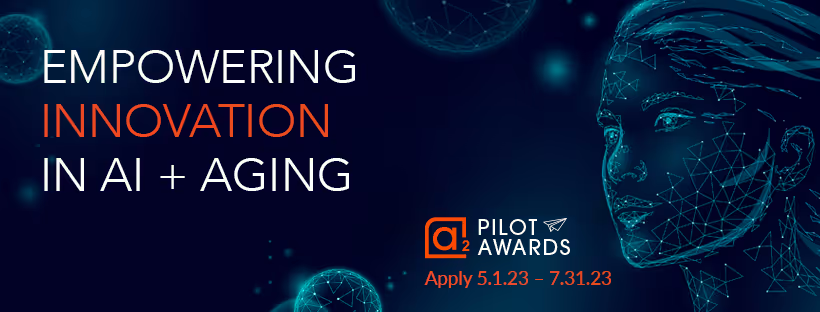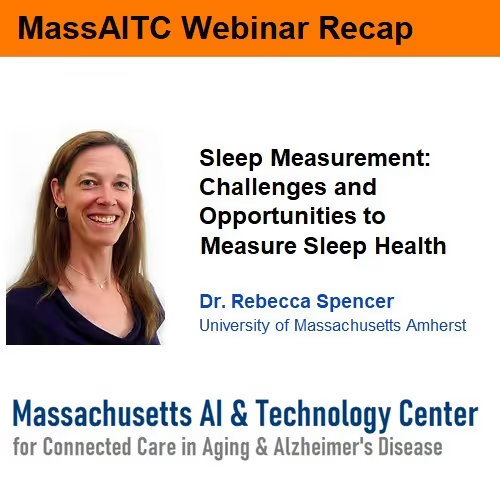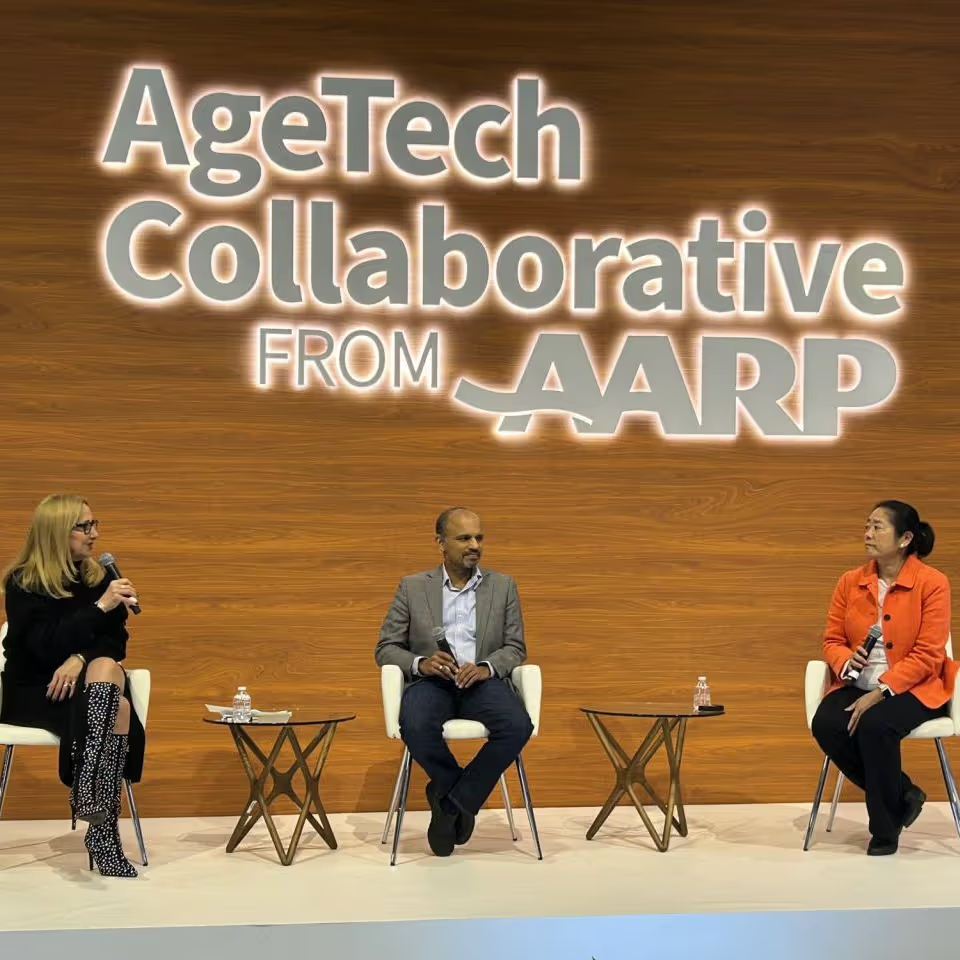Enlisting AI, new technology for an aging nation
Despite average life expectancy doubling over the past two centuries, advancing age still brings with it increased risk of frailty and cognitive decline. By 2060, an estimated 95 million Americans will be 65 or older and 17 percent of people age 75 to 84 are projected to develop Alzheimer’s disease or a related dementia.1,2 The challenges of caring for large numbers of people with frailty and dementia are considerable, not only for individuals and their families, but for society at large.
In September 2021, the National Institute on Aging (NIA), part of the National Institutes of Health, launched the Artificial Intelligence and Technology Collaboratories (AITC) for Aging Research program.3 Through the AITC program, NIA plans to award at least $40 million over a 5-year period to fund technology research, development, and demonstration projects likely to lead to practical commercial applications to promote healthy aging and improve care for people living with Alzheimer’s or a related dementia.
NIA has already funded 33 AITC projects—and new funding opportunities will be available to researchers and innovators over the next few months.
Three universities serve as major AITC hubs: Johns Hopkins University (JH AITC), the University of Massachusetts Amherst (MassAITC), and the University of Pennsylvania (PennAITech). In addition to world-class research facilities and leadership from experts representing a range of scientific disciplines, each AITC brings a unique perspective to the program, with emphases on delivering engineered solutions to market, supporting healthy aging in the home, and integrating care and monitoring across home and clinical settings. Rose Li and Associates (RLA) serves as the Coordinating Center for the AITC program. The three AITCs and the Coordinating Center together comprise the a2 Collective.
Partha Bhattacharyya, PhD, NIA Division of Behavioral and Social Research program director and key architect of the AITC program, laid out the challenges and opportunities facing an aging population: “Development of technology for older adults lags behind and this likely contributes to disparities in health care. The a2 Collective harnesses AI and technological innovation to enhance the health and well-being of older adults in a way that uniquely brings together people and resources to accelerate progress.”
The a2 Collective intentionally takes a collaborative approach to bring together experts and entrepreneurs with a wide range of experience—in medicine, geriatrics, clinical research, computer sciences, applied technologies, transportation, aging policy and public health, caregiving, stakeholder engagement, commercialization, and business development.
"The a2 Collective harnesses AI and technological innovation to enhance the health and well-being of older adults in a way that uniquely brings together people and resources to accelerate progress."
The promise of transformational technology
Previous advances in science, medicine, public health, and technology have played important roles in increasing life expectancy. Now, next-generation technologies, including AI and machine learning, are being enlisted for their potential to further improve health and well-being.
The public is already familiar with early AI applications such as web-based search engines, systems that understand human speech, and ride-sharing apps. And newer technologies that might apply specifically to better health and care with age are already emerging, including personalized medical alert systems, active medication management, telehealth visits, sensors and wearable devices, GPS systems to track wandering individuals, health-related smartphone apps, and even assistance from robotic companions.
NIA envisions a broad array of AI applications providing help to older individuals and caregivers, including:
• Ambient intelligence, which includes smart environments that can monitor for health risks
• Affective computing, which recognizes and interprets human behaviors and emotions and can provide adaptive responses
• Computer vision, which can assist in analyzing images and inform diagnostics
• Natural language processing, which can help people affected by disorders of speech, hearing, language processing, and communication
• Decision networks and probabilistic programming, which can support clinical decision making
• Machine learning, which can help understand, predict, and respond to health risks such as injuries due to falls or monitor patients with progressive illnesses such as heart failure
NIA will specifically direct funds to developing AI’s potential to assist individuals with dementia by helping to maintain cognitive faculties; address delirium and confusion; mitigate social isolation; and provide medication management, health monitoring, and much more.
"Recent trends in machine learning hold absolutely tremendous potential for digital medicine."
Innovation in action

In March 2023, the a2 Collective held its first national symposium at Johns Hopkins University. Rama Chellappa, PhD, co-principal investigator of JH AITC, captured the enthusiasm of the event: “Recent trends in machine learning hold absolutely tremendous potential for digital medicine—it’s a shame if we don’t take advantage of this!” The in-person symposium, with speakers, posters, and encouraged interactions among attendees, showcased the first group of funded pilots—which includes projects aimed at the use of virtual reality to facilitate social engagement, AI-assisted chat device advisers to help caregivers, robotic assistants to detect and calm bouts of dementia-induced aggression in patients in residential centers, home-based movement sensors to predict cognitive decline, and wearable devices embedded in earbuds to monitor heart health.
New cohorts of innovators looking to make a difference in the lives of aging people and those living with Alzheimer’s or a related dementia are taking advantage of exciting funding opportunities from federal and private sources. What technologies will truly succeed in improving the lives of millions of aging Americans, particularly those who are most vulnerable? Many innovative technologies with great potential do not survive the challenges of product development and mass distribution—the so-called “valley of death” in which a prototype fails to attract enough investment to transition to a viable commercial product. To bridge that gap, innovative and well-capitalized players in the emerging AgeTech market will need to get involved and engage older adults as partners in innovation.
Rose Li, PhD, MBA, principal investigator of the a2 Collective Coordinating Center, observed: “As the AITCs discover and identify the most promising technologies, investors can spur market testing—and ultimately, commercialization.” A diverse group of dedicated scientists and tech innovators are stepping up to meet this challenge head on. Grant applications are now open to fund the next round of transformational projects.
NIA is one of 27 Institutes and Centers of the National Institutes of Health at the U.S. Department of Health and Human Services. The a2 Collective is funded through NIA grants U24AG073094 (the a2 Collective Coordinating Center), P30AG073104 (JH AITC), P30AG073105 (PennAITech), and P30AG073107 (MassAITC).
References
1. Vespa, Jonathan, Lauren Medina, and David M. Armstrong, “Demographic Turning Points for the United States: Population Projections for 2020 to 2060,” Current Population Reports, P25-1144, U.S. Census Bureau, Washington, DC, 2020. https://www.census.gov/content/dam/Census/library/publications/2020/demo/p25-1144.pdf
2. (2020), 2020 Alzheimer's disease facts and figures. Alzheimer's Dement., 16: 391-460. https://doi.org/10.1002/alz.12068
3. The program’s formation began in September 2020, when NIA released a pair of funding opportunity announcements for AITCs (RFA-AG-21-009) and an AITC Coordinating Center (RFA-AG-21-018) that would together serve as a national resource promoting AI and technology development to enhance the health and well-being of older Americans, including persons with dementia and their caregivers.





